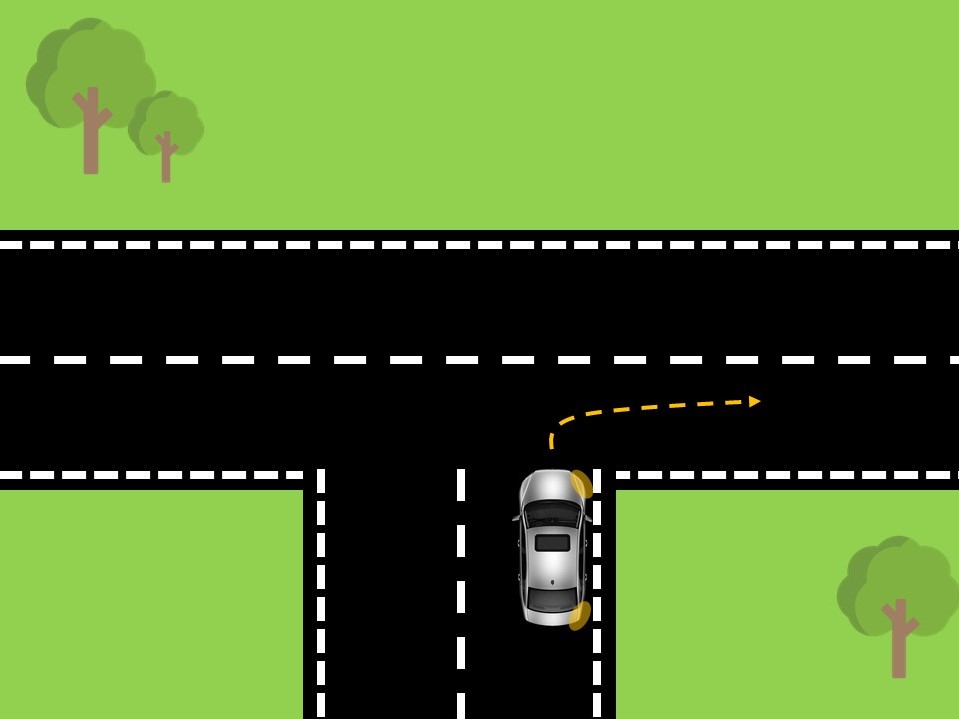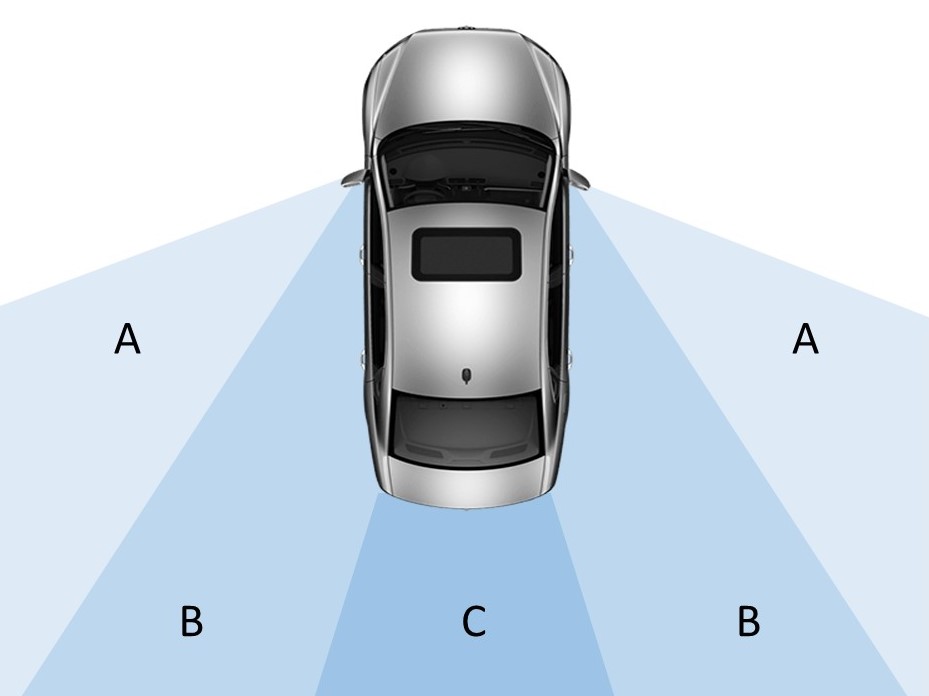Overview
The road has many lanes. But which one should you choose and when? Not all lanes are the same. Some lanes are faster then others and in other lanes you are only allowed to turn.
Choosing a lane
- Right most lane: Generally you must always try to choose the right most lane. Right lane is usually the slowest lane which allows other drivers to overtake you from the left. Also its easier to turn off from the freeway when you are on the right most lane
 Two lanes going in in the same direction
1. Always choose right most lane
(See exceptions below)
2. If speed is below 70km/h choose any lane
Two lanes going in in the same direction
1. Always choose right most lane
(See exceptions below)
2. If speed is below 70km/h choose any laneExceptions when you can choose any lane
You can choose any lane in the following cases
- Two lanes: If there are two lanes going in the same direction. And the speed limit is below 70km/h. You can choose any lane and also overtake on either the right or left
- Lane arrows: If there are arrows or boards indicating you can drive in that lane
Vehicle positioning on the lane
Always try to be in the middle of the lane as much as possible. Depending on the time of day and visibility conditions you might want to choose a better position
 Vehicle positioning on the lane
Visibility bad: Keep to the center
Visibility good: Keep to the right
Vehicle positioning on the lane
Visibility bad: Keep to the center
Visibility good: Keep to the right
Positioning when driving straight
- Daylight (Good visibility) - Country side: If you can see clearly for long distances, its better to place yourself to the right side of the road. This allows cars that pass you to have a bigger safety margin
- Night time (Poor visibility) - Country side:If you cant see well during the night, its better to position your car closer to the center line. This gives some safety margin if an animal were to jump into the road from the right side
- Daylight (Good visibility) - Home zone: Keep your car closer to the center line. Reason being children or animals can run into the street from behind a car. Also give space for cars that open their doors suddenly
- Night time (Poor visibility) - Home zone: Keep your car closer to the center line.
Positioning when turning at an intersection
You need to position your car a appropriately when taking a turn. Here are some examples
Left turn on two way street:
 Left turn. Driving on a carriageway with two lanes
Left turn. Driving on a carriageway with two lanesPosition the car close to the center line of the carriageway
Right turn on two way street:
 Right turn. Driving on a carriageway with two lanes
Right turn. Driving on a carriageway with two lanesPosition the car close to the right side of the carriageway
Left turn one way street:
 Left turn. Driving on a carriageway with one lane
Left turn. Driving on a carriageway with one lanePosition the car close to the left side of the carriageway
Right turn one way street:
 Right turn. Driving on a carriageway with one lane
Right turn. Driving on a carriageway with one lanePosition the car close to the right side of the carriageway
How to change lanes correctly
When ever you need to change a lane or drive into a intersection you will change a lane. When your car change from one lane to another lane you must always turn on your indicator left or right.
Follow these steps to change a lane like a pro
- Look in front of you. Assess the situation eg: (You are not too close to another car or there is not a car approaching)
- Look behind you in this sequence (See image below)
- (C) Rear view mirror
- (B) Side mirror
- (A) Blind spot (You have to turn your head)
- If all is good. Yurn on the indicator
- Give a second for other drivers to understand you will be turning
- If all is good, check your blind spot quickly again
- Turn out onto the lane
 The following image displays the view you get from looking into the rear view mirrors and blind spot. Keep a good eye on the cars behind you when changing lanes
The following image displays the view you get from looking into the rear view mirrors and blind spot. Keep a good eye on the cars behind you when changing lanesYou cant always change a lane
There will be times that you cant change a lane. Such as when a car is driving very fast behind you or if there is road marking on the road that prevents it. Solid lines indicate that you cant cross the line. (Some exceptions to the rule: When exiting a property, or if construction signs indicate you to drive over solid line)
 You are not permitted to cross over a solid line
Exception: If there is a broken line on your side followed by a solid line you are allowed to cross over it
You are not permitted to cross over a solid line
Exception: If there is a broken line on your side followed by a solid line you are allowed to cross over it